Remember the good old days when all you had to do
to boot into Safe Mode was to press the F8 key when
you started your PC?
Sadly, since the roll out of Windows 8, the F8
key shortcut has completely become redundant.
Instead you now have to spend an age working your
way through the Advanced Startup menus.
Never fear, though, all is not lost; you can
easily add a Safe Mode link to the Windows 8.1 boot
menu. This will, upon starting your PC, give you a
menu which will allow you to either boot directly to
Windows 8.1 or, alternatively, boot directly into
Safe Mode.
To add Safe Mode to the boot menu simply follow
these easy steps.
- Open the Command Prompt
with Administrative privileges.
- In the Command Prompt
window type: bcdedit /copy {current}
/d "Safe Mode" and then press
Enter.
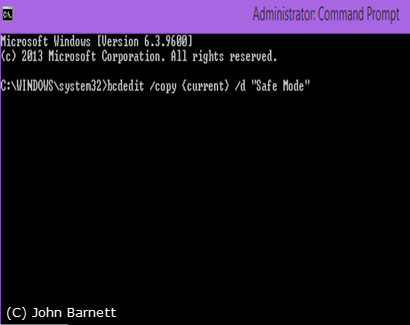
Fig: 8.36.1 Type the command
in the Command prompt window
- If the command has been successful you
should now see the following screen. (See
Fig: 8.38.2) You can now Close
the Command Prompt Window.
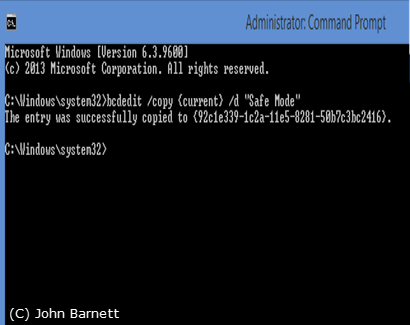
Fig: 8.36.2 The entry has
been successfully copied
- If you now re-start your PC
you should be presented with the following
boot menu screen. See Fig:
8.38.3, below.
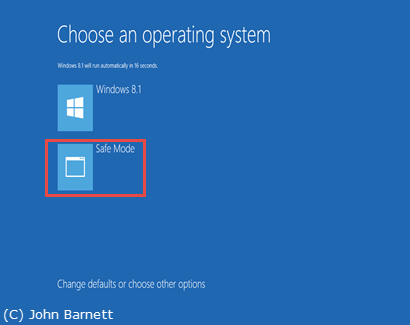
Fig:8.36.3 The Boot menu
screen
- By default the time out for
the boot menu is 30
seconds. This means that you will have 30
seconds to choose which option you want before
the default operating system (Windows 8.1)
opens.
- If this time out is too long for you, you
can always reduce the time out to a more
suitable period by editing the boot entry in
System Configuration.
- To Open System Configuration
first press the Windows Key + R
simultaneously to open the Run command
box.
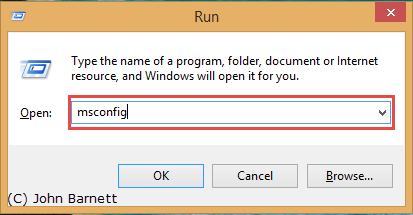
Fig: 8.36.4 Type msconfig
to open System Configuration
- In the Open dialogue box type:
msconfig and then click the
OK button.
- The System Configuration
window should now open.
- Next click on the Boot tab.
- In the Boot tab section of
System Configuration look for
the section marked Timeout and
change the number to one which is more suitable
for your use, for example, say, 5 seconds.
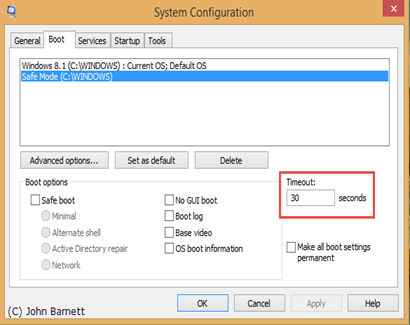
Fig: 8.36.5 Change the Time
Out period to either decrease or increase boot
time
- Finally click the OK button
to Close the System
Configuration window.
- The next time you boot your PC, if you
haven't made a selection, the default operating
system will open in "X" seconds depending upon
the time you have stipulated.
Removing the Safe Mode boot option
If you decide at a later date that you wish to
completely remove the Safe Mode option from the
Windows boot menu just follow the steps below.
- Press the Windows key + R
simultaneously to open the Run
command.
- In the Open dialogue box
type: msconfig and
then press the OK button.
- The System Configuration
window will now open.
- Click on the Boot tab.
- In the Boot tab window you
will see the following options (depending upon
your setup).
Windows 8.1 (C:\Windows): Current
OS; Default OS.
Safe Mode (C:\Windows)
- Highlight the Safe
Mode option by clicking on it.
- Just below these entries you should see the
following buttons: Advanced options;
Set as default; Delete.
- Click on the Delete button.
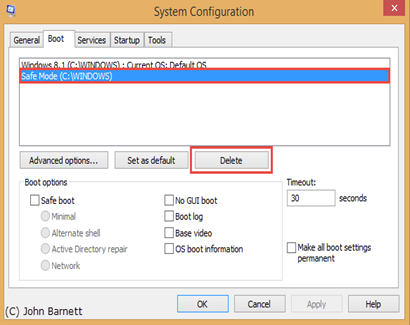
Fig: 8.36.6 Press the Delete
key to remove the Safe Mode option
- The Safe Mode entry should
now be removed.
- Finally click the OK button
to close the System Configuration
window.
- You may need to re-start
your PC in order for the changes to apply.
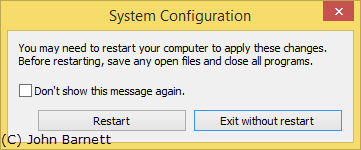
Fig: 8.36.7 Re-Start the PC
- The next time you boot up Windows will
either boot directly to the desktop or, if you
dual boot, your boot menu will appear but the
Safe Mode option will be missing.